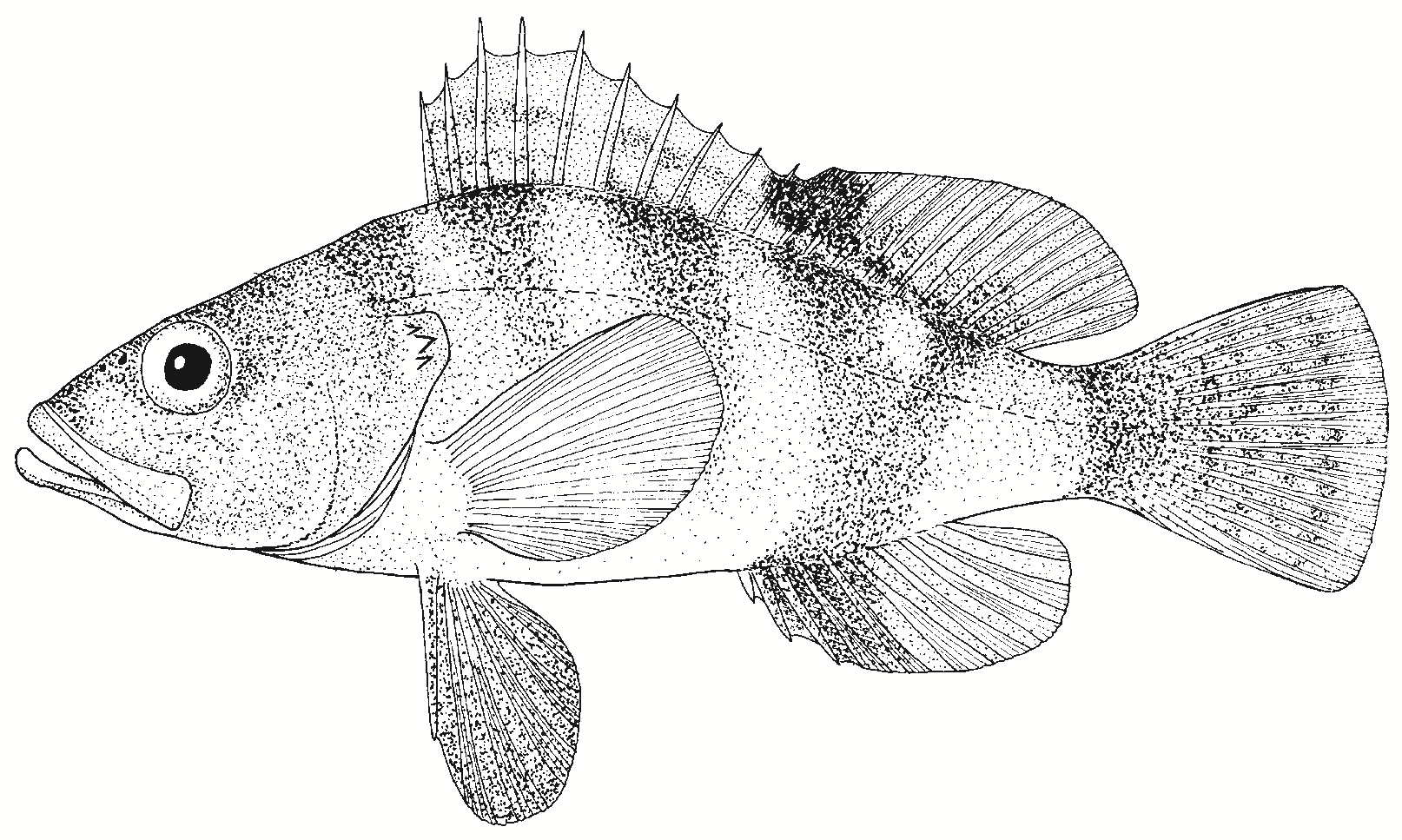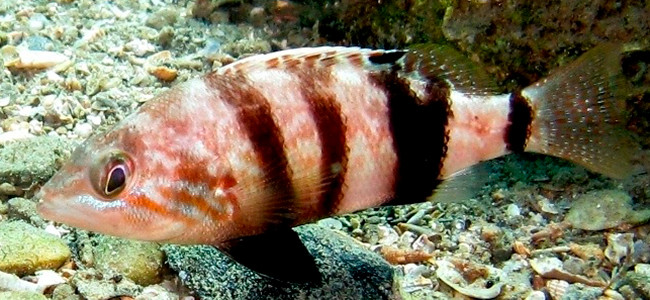Serranus hepatus, commonly known as the brown comber or vaquita, is a small fish belonging to the family Serranidae. Its scientific name comes from Latin, where ‘Serranus‘ refers to the serranid genus, and ‘hepatus‘ means ‘liver‘, likely referring to the dark brown color of this fish, reminiscent of liver color. This species is widely distributed throughout the Mediterranean Sea as well as the eastern Atlantic, from Portugal to the coasts of Morocco, including the Canary Islands and Madeira. It prefers coastal areas, at depths between 10 and 150 meters, associating with sandy, rocky, or algal bottoms, and is often found in seagrass beds of Posidonia oceanica.

Serranus hepatus is a small-sized fish, reaching a maximum length of around 15 cm, though most specimens measure between 10 and 12 cm. Its body is elongated and laterally compressed, with an overall brown or grayish coloration, often with a slight reddish or purplish tint. It displays several dark vertical bands running along its body, though these bands can be diffuse and not always clearly visible. Its dorsal and anal fins are long, while the caudal fin is somewhat rounded. A distinctive feature of this species is a dark spot at the base of the pectoral fin, which helps distinguish it from other similar Serranus species such as Serranus cabrilla and Serranus scriba, which tend to be larger and have more complex color patterns.
Serranus hepatus is carnivorous, feeding mainly on small benthic invertebrates such as crustaceans, molluscs, and bristle worms. It is an opportunistic hunter, actively searching for prey on the seafloor and using its small but strong mouth to capture them. It adapts easily to different substrate types, both rocky and sandy, and uses its camouflage ability to stalk prey undetected. Being a small and agile fish, it can quickly move among algae or rocks to catch prey or escape predators.
Regarding reproduction, Serranus hepatus is a synchronous hermaphrodite, meaning individuals possess both male and female reproductive organs simultaneously. This hermaphroditism allows it to maximize reproductive opportunities by acting as either male or female during mating. Fertilization is external and occurs during spring and summer. Eggs are released into the water and float in the water column until hatching. Larvae are planktonic, enabling them to disperse with ocean currents before settling on the bottom as juveniles.
An interesting fact about Serranus hepatus is its ability to slightly change color for camouflage, helping it evade predators and remain unnoticed while hunting. Despite its small size, it is a very territorial fish, especially during the breeding season, when it aggressively defends its territory against other individuals. Although not a species of significant commercial interest, it is common in recreational fishing and is occasionally caught in artisanal fisheries in the Mediterranean.
Photos:


 from
from